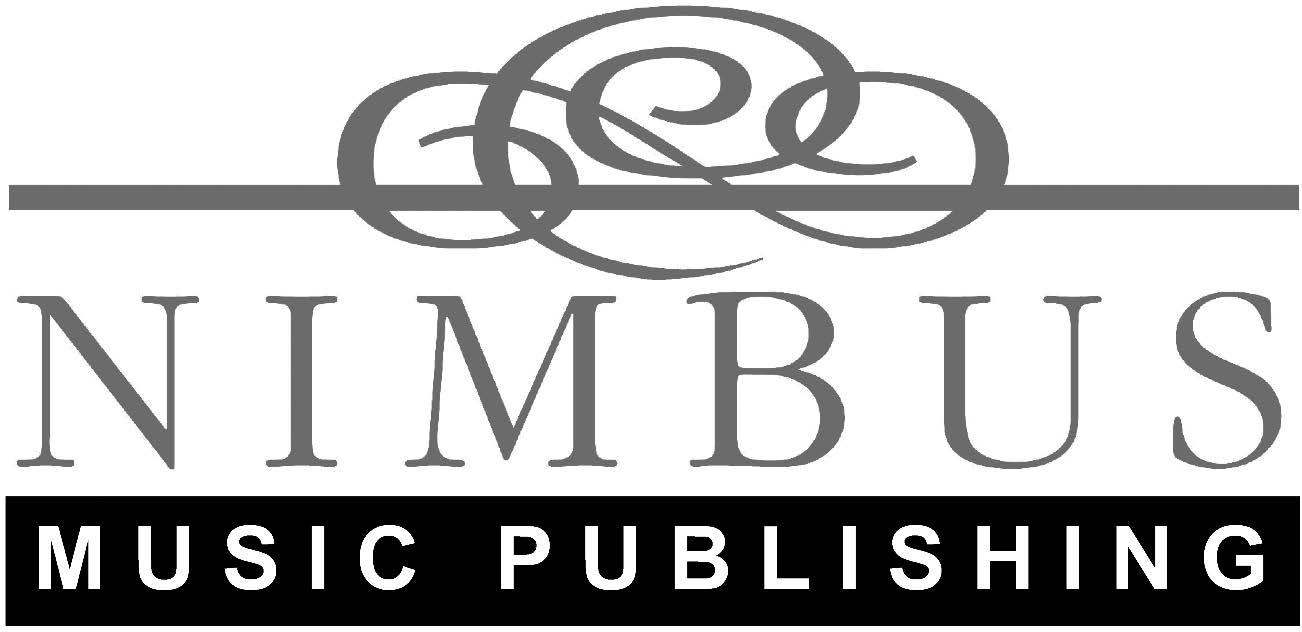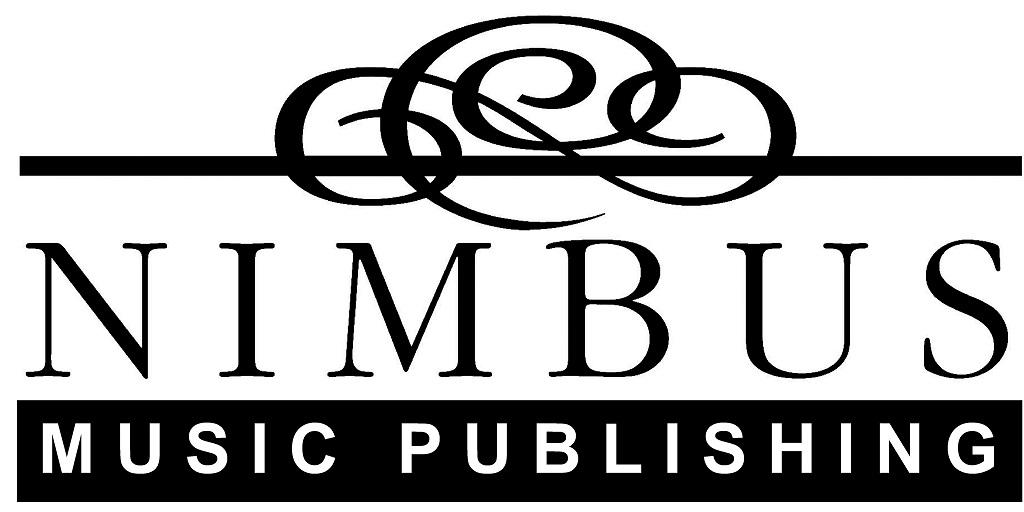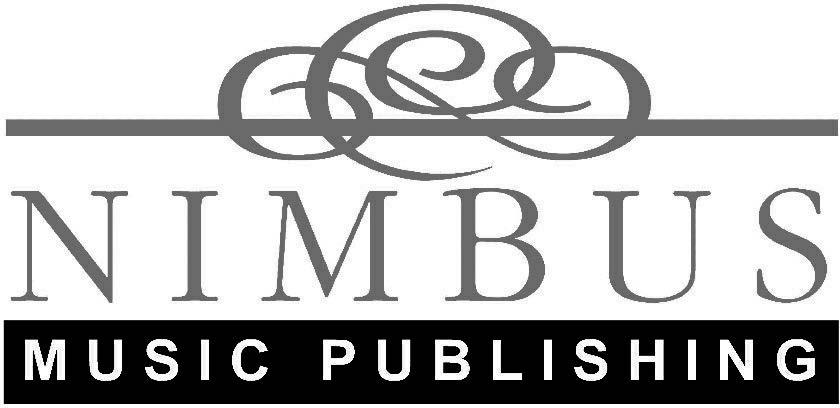The Glory Façade is the temple’s most important and exudes an aura of mystery, awe, and majesty The Lord’s Prayer appears in fifty languages on the Eucharist door, with Catalan shining out in polished bronze The opening horn solo quotes the Gregorian Credo plainsong (No.6), the music appears suspended in time, without pulse, giving a sense of music in different tempi. The coda re-affirms the Credo motifs over a sustained pedal note, now in sharp focus, before resolving finally in a blaze of sound.
from La Sagrada Família Symphony No. 2 Movement III Glory 8 minutes
Short Pieces for Orchestra
Nimbus and Lyrita have published a series of shorter orchestral works by Augusta Read Thomas, Richard Blackford and George Lloyd. These Short Pieces for Orchestra (SPO) will be sold with a three-year, unlimited performance licence offering much better value for money than typical hire arrangements. Some pieces have been extracted from larger symphonic works and each is published with a descriptive name to support thematic programming and engage with the new “streaming” audience. This series supports the desire to perform, programme and introduce audiences to new repertoire for less initial cost, and allows multiple performances for no additional cost. Each kit will contain a full conductors score and one “master part” per instrument along with a licence for the ensemble to copy and perform as often as they like for the next three years. Between three and fifteen minutes SPO are perfect for opening your concert or inserting just before the interval to create a talking point.
NMP1133 Fanfare of Hope and Solidarity, Augusta Read Thomas (4:00)
Majestic, optimistic, blazing, and passionate, yet, in the centre of the piece, a robust expressive an eloquent lyrical passage unfolds a range of emotions. The composition ends as if reaching skyward - affirming and hopeful – as bells’ resonance hangs in the air like sunlight ripples.
NMP1171 Sunburst, a fanfare for Orchestra, Augusta Read Thomas (7:00) Celebratory and Optimistic. A flash of sunlight through a break in clouds. Rays diverging from a central point like the sun. Ideal for a youth, community or college orchestra requiring very small percussion.
NMP1026 Plea for Peace, for Soprano and String Orchestra, Augusta Read Thomas (6:00)
The soloist’s elegant, wordless vocalise weaves in and out of the sustained harmonies in graceful counterpoint, drawing us closer to our common humanity. Simple harmonies slowly transform, becoming rich and complex at the insistent, dramatic climax: a wordless scream from the soul then a sonic space of meditation, reflecting on an absolute plea for lasting peace.
NMP1266 Plea for Peace, for Soprano and Wind Ensemble, Augusta Read Thomas (6:00)
The soloist’s elegant, wordless vocalise weaves in and out of the sustained harmonies in graceful counterpoint, drawing us closer to our common humanity. Simple harmonies slowly transform, becoming rich and complex at the insistent, dramatic climax: a wordless scream from the soul then a sonic space of meditation, reflecting on an absolute plea for lasting peace.
NMP1077 Canticle of Winter for soprano saxophone & string orchestra, Richard Blackford (7:00)
The sense of restlessness, of something unresolved, despite the beauty of the winter landscape, permeates the music. Soft, sustained and melancholic, is contrasted with rhythmic string writing against exuberant flurries and plangent sound of the soprano saxophone that evokes a traveller’s journey through the winter night. Inspired by Robert Frost’s poem Stopping by Woods on a Snowy Evening: The woods are lovely, dark and deep, But I have promises to keep, And miles to go before I sleep…,
NMP1008 Spirited, an aspirational overture, Richard Blackford (6:00)
A sense of hushed anticipation and excitement, a trumpet presents a heroic theme, punctuated by ricochet timpani. A solo horn plays the main theme of aspiration which is taken up by violins before bringing us back to the heroic trumpet and bright, dancing violin.
NMP1255 Clarissa’s Tango for violin and String orchestra, Richard Blackford (4:00)
The violin and orchestra capture the sound and essence of Tango creating an evocative dance between the instruments. The violin has leads with a short, cadenza-like introduction while the orchestra guides their interplay with exciting riffs. An ebullient duet making virtuoso demands on the violin with high tessitura passages and multi-stops to fast passages of the tango melody.
NMP1006 The Better Angels of Our Nature, for oboe and String orchestra, Richard Blackford (15:00)
Abraham Lincoln’s inaugural address on March 4th 1861 is theme for this short concerto for oboe and strings. Divided into two continuous movements, separated by Taps, the bugle call played for funerals or at sunset. “We must not be enemies. Though passion may have strained, it must not break our bonds of affection. The mystic chords of memory will swell when again touched, as surely they will be, by the better angels of our nature.”
NMP1267 Glory - Movement III La Sagrada Família Symphony, Richard Blackford (8:00)
The Glory Façade is the temple’s most important and exudes an aura of mystery, awe, and majesty. The Lord’s Prayer appears in fifty languages on the Eucharist door, with Catalan shining out in polished bronze. The opening horn solo quotes the Gregorian Credo plainsong (No.6), the music appears suspended in time, without pulse, giving a sense of music in different tempi. The coda re-affirms the Credo motifs over a sustained pedal note, now in sharp focus, before resolving finally in a blaze of sound.
NMP1268 Aquarium - Movement 7, Carnival of the Animals orchestrated by Richard Blackford (3:00)
Orchestrating Carnival of the Animals for symphony orchestra provided an opportunity to re-interpret Saint-Saens magical score with new colours and no pianos! The sensuous, full textures of soft muted brass, cascading harp, gurgling woodwind, made each movement a delight to animate.
SRMP0138 An Arctic Stillness from Symphony No. 4 ‘The Arctic’ II Lento tranquillo, George Lloyd (13:00)
A glacial coldness from the strings punctuated by warmer solos from oboe and clarinet. The strings expand the texture but without breaking the sombre mood. A brighter character with rustling strings supporting woodwind solos leads to a soulful melody where the role of strings and woodwind is reversed, arriving at a climactic cadence from the timpani. The opening mood of stillness returns.
SRMP0139 Day and Night in the City from Symphony No. 4 ‘The Arctic’ III Allegro scherzando George Lloyd (14:00)
Elements of Berlioz and a straightforward ABA structure. After the opening bustle there is an adagio contrast where the string and woodwind groups gently duet with each other. Waking to life again, the opening material returns and is interrupted by a short chorale before closing with a tutti restatement of the opening themes.
SRMP0140 Hall of Mirrors from Charade ‘Scenes from the 60s’ II LSD, George Lloyd (7:00)
Echoes of Debussy and Delius. A haunting, or perhaps haunted trip; the composer’s original title for the piece, written in the swinging 1960s, was simply LSD. It is a short energising overture, orchestrated with great skill, an appetiser.
SRMP0141 Comedy of Manners from Charade ‘Scenes from the 60s’ III March-In, George Lloyd (4:00)
First class light music, where a circus atmosphere meets farce. A nonchalant, brisk march.
SRMP0142 Flying Saucers from Charade ‘Scenes from the 60s’ IV Flying Saucers, George Lloyd (6:00)
A light scherzo, poking gentle fun at the sky-watchers of the mid-twentieth century who saw aliens behind every cloud. The dramatic, dissonant passage near the end conjures up images of an extra-terrestrial encounter, yet the whimsical closing bars suggest there is no cause for alarm.
SRMP0143 Politics and Pomp from Charade ‘Scenes from the 60s’ VI Party Politics, George Lloyd (4:00)
Two political parties are talking at us in a light moto-perpetuo scherzo. Selfimportant ideas are introduced on the lower strings and woodwind while the mock-heroic and cartoonish thoughts are ushered in by flutes and clarinets. Both themes are inflated, truncated, and gleefully distorted, inspiring colourful and inventive orchestration. In the closing section both parties gang up on us as the two tunes merge harmoniously together’. Gently satirical, cheerfully irreverent.
For more information contact: www.wyastone.co.uk publishing@wyastone.co.uk
Conductors Score
by Richard Blackford
Music
La Sagrada Familia Symphony
Background Note
Antoni Gaud‘ís monumental temple La Sagrada Familia is a universe within a building. Its mass of stone and metal is bathed in coloured light diffused from dazzling stained-glass windows. The colossal structure is supported by great pillars inspired by the shapes of tree trunks that reinforce the impression of a spiritual forest. Around the main access points to the basilica are three great facades: Nativity, Passion and Glory. Each is a visual world unto itself, stylistically apart yet united by Gaud’ís grandiose vision. These three facades are the inspiration of my three-movement La Sagrada Familia Symphony, a sequence of narratives. The visual journey, from the representational to the abstract, is something I also tried to mirror in the music. When I visited La Sagrada Familia in October 2019 there was still scaffolding to support the work on the remaining towers. Whereas La Sagrada Familia Symphony is inspired by that unique building, I hope that my musical structure can stand alone as an homage to Gaudí in its own right.
I Nativity. The Nativity Facade, dominated by angel trumpeters, is populated by images of Biblical figures, saints, musicians, animals, trees, flowers. Some of the images are naïve, some sentimental, with wildlife so charming that one cannot restrain a smile as the worlds of God, Man and Nature coalesce. The symbolic arrangement of the tiers of figures is full of hope and optimism.
The movement is in sonata form. It’s opening trumpet fanfares, with their dotted rhythm, permeate the whole movement. The second subject, introduced by the cor anglais, is the Nativity theme, based on ascending and descending fourths. The development section, initiated again by the three trumpets (now muted), is underpinned by strong motor rhythms, and climaxes with an expansive tutti. The Nativity theme returns, freshly harmonised, on unison upper strings. The movement ends with soft woodwind and harp echoes of the dotted motif.
II Passion By contrast, Gaudí planned the Passion Façade in a spirit of anguish - the representation of pain and sorrow. It is stark and restrained. The world of this façade is brutal, its six tilted columns straddle the monolithic sculptures by Josep Maria Subirachs like bones. The drama of Christ’s Passion unfolds in twelve sculptures, from the tenderness of The Last Supper to The Flagellation, Trial and Crucifixion. Unforgettable images, such as the futuristic legionnaires, the soldiers playing dice, the loyal dog at Judas’ feet (Gaud’ís own invention), the kiss of betrayal.
Musically this is a combination of rondo form and tone poem. A jagged six-note motif (symbolic of the six columns) is answered by a desolate violin motif descending in quarter-tones against aggressive cello and bass interjections. The impression of instability and impending disaster is contrasted with a soft rising string theme that reveals a tender cello solo, a moment of calm inspired by Subirachs’ tender depiction of The Last Supper. The persistently aggressive music leads to a militaristic theme, featuring muted brass and snare drum, then whip –the Flagellation. The first of two fast sections in canon, like rushing wind, alternate with the brutal, militaristic motif. The music comes to a sudden standstill, and a high solo clarinet echoes the tender cello theme – Christ on the Cross. After an eerie silence the soft string theme is interrupted by four cataclysmic chords (The Torn Veil). The fast, divided string music re-appears more urgently, and powers towards the movement’s end.
III Glory. The Glory Façade is the temple’s most important, being the main symbolic entrance and oriented towards the midday sun. Gaudí planned that worshippers would be conscious of the role of man within Creation and of his destiny within divine laws. Over sixteen colossal stone lanterns that serve as the roof is a cluster of illuminated clouds, on whose highest point is emblazoned the word Credo. Seven bronze doors give access to the temple. On the Eucharist door The Lord’s Prayer appears in fifty languages, with the Catalan version shining out from the others in polished bronze. The façade exudes an aura of mystery, awe and majesty.
The music of the final movement is the most abstract. Its entire melodic material is based on the opening horn solo, whose first two phrases quote the Gregorian Credo plainsong (No.6). Its following phrases form the basis for the two climaxes of the movement. Much of the orchestral writing evokes a blurred effect, with soft chord cycles constantly shifting as instruments shine through the texture by crescendo and diminuendo. The music appears suspended in time, without pulse. After the first climax the plainsong melody re-appears over a soft ostinato bass in counterpoint with bells and high woodwind, giving a sense of music in different tempi. The coda re-affirms the Credo motifs over a sustained pedal note, the music now in sharp focus, before resolving finally in a blaze of sound.
Richard Blackford
Orchestration
3 Flutes (3rd doubling Piccolo)
3 Oboes (3rd doubling Cor Anglais)
2 Clarinets (B flat & A)
Bass Clarinet
3 Bassoons (3rd doubling Contrabassoon)
4 Horns in F
3 Trumpets in B-flat
3 Trombones
Tuba
Timpani
3 Percussion: 3 woodblocks, 5 temple blocks, vibraslap, ratchet, triangle, suspended cymbal, tam-tam, snare drum, bass drum, marimba, tubular bells, 3 low tuned Gongs (D-sharp, E, F-sharp)
Harp
Organ (optional)
Strings
Duration: 8 minutes
Ob.1.2
Fl.1.2
Ob.1.2
Cl.1.2
Ob.3
Cl.1.2
B.Cl.
Bsn.1.2
Bsn.3
Hn.1.2
Hn.3.4 Tpt.1
Tpt.2.3
3 4 4 4
3 4 4 4 ?bbbbb &bbbbb (1º) &bbbbb &bbbbb &bbbbb &bbbbb &bbbbb &bbbbb &bbbbb &bbbbb Bbbbbb Bbbbbb Bbbbbb Bbbbbb ?bbbbb ?bbbbb ?bbbbb
&bbbbb &bbbbb &bbbbb &bbbbb &bbbbb &bbbbb ?bbbbb ?bbbbb ?bbbbb ?bbbbb &bbbbb &bbbbb &bbbbb &bbbbb Bbbbbb ?bbbbb ?bbbbb ?bbbbb ?bbbbb
&bbbbb ?bbbbb ?bbbbb &bbbbb &bbbbb &bbbbb ?bbbbb
B.Cl. Bsn.3
Hn.1.2
Hn.3.4
Tbn.1.2
C.A.(3)
T.Bells T.Bells
Bsn.1.2
Cbsn.
Hn.1.2
Hn.3.4
Tbn.1.2 B.Tbn.
?bbbbb ?bbbbb ?bbbbb &bbbbb &bbbbb &bbbbb &bbbbb ?bbbbb ?bbbbb ?bbbbb &bbbbb &bbbbb ?bbbbb ?bbbbb &bbbbb &bbbbb &bbbbb
Bsn.1.2
Cbsn.
Hn.1.2
Bsn.1.2 Cbsn.
?bbbbb
/ &bbbbb &bbbbb &bbbbb &bbbbb ?bbbbb
&bbbbb
Short Pieces for Orchestra
Nimbus and Lyrita have published a series of shorter orchestral works by Augusta Read Thomas, Richard Blackford and George Lloyd. These Short Pieces for Orchestra (SPO) will be sold with a three-year, unlimited performance licence offering much better value for money than typical hire arrangements. Some pieces have been extracted from larger symphonic works and each is published with a descriptive name to support thematic programming and engage with the new “streaming” audience. This series supports the desire to perform, programme and introduce audiences to new repertoire for less initial cost, and allows multiple performances for no additional cost. Each kit will contain a full conductors score and one “master part” per instrument along with a licence for the ensemble to copy and perform as often as they like for the next three years. Between three and fifteen minutes SPO are perfect for opening your concert or inserting just before the interval to create a talking point.
NMP1133 Fanfare of Hope and Solidarity, Augusta Read Thomas (4:00)
Majestic, optimistic, blazing, and passionate, yet, in the centre of the piece, a robust expressive an eloquent lyrical passage unfolds a range of emotions. The composition ends as if reaching skyward - affirming and hopeful – as bells’ resonance hangs in the air like sunlight ripples.
NMP1171 Sunburst, a fanfare for Orchestra, Augusta Read Thomas (7:00) Celebratory and Optimistic. A flash of sunlight through a break in clouds. Rays diverging from a central point like the sun. Ideal for a youth, community or college orchestra requiring very small percussion.
NMP1026 Plea for Peace, for Soprano and String Orchestra, Augusta Read Thomas (6:00)
The soloist’s elegant, wordless vocalise weaves in and out of the sustained harmonies in graceful counterpoint, drawing us closer to our common humanity. Simple harmonies slowly transform, becoming rich and complex at the insistent, dramatic climax: a wordless scream from the soul then a sonic space of meditation, reflecting on an absolute plea for lasting peace.
NMP1266 Plea for Peace, for Soprano and Wind Ensemble, Augusta Read Thomas (6:00)
The soloist’s elegant, wordless vocalise weaves in and out of the sustained harmonies in graceful counterpoint, drawing us closer to our common humanity. Simple harmonies slowly transform, becoming rich and complex at the insistent, dramatic climax: a wordless scream from the soul then a sonic space of meditation, reflecting on an absolute plea for lasting peace.
NMP1077 Canticle of Winter for soprano saxophone & string orchestra, Richard Blackford (7:00)
The sense of restlessness, of something unresolved, despite the beauty of the winter landscape, permeates the music. Soft, sustained and melancholic, is contrasted with rhythmic string writing against exuberant flurries and plangent sound of the soprano saxophone that evokes a traveller’s journey through the winter night. Inspired by Robert Frost’s poem Stopping by Woods on a Snowy Evening: The woods are lovely, dark and deep, But I have promises to keep, And miles to go before I sleep…,
NMP1008 Spirited, an aspirational overture, Richard Blackford (6:00)
A sense of hushed anticipation and excitement, a trumpet presents a heroic theme, punctuated by ricochet timpani. A solo horn plays the main theme of aspiration which is taken up by violins before bringing us back to the heroic trumpet and bright, dancing violin.
NMP1255 Clarissa’s Tango for violin and String orchestra, Richard Blackford (4:00)
The violin and orchestra capture the sound and essence of Tango creating an evocative dance between the instruments. The violin has leads with a short, cadenza-like introduction while the orchestra guides their interplay with exciting riffs. An ebullient duet making virtuoso demands on the violin with high tessitura passages and multi-stops to fast passages of the tango melody.
NMP1006 The Better Angels of Our Nature, for oboe and String orchestra, Richard Blackford (15:00)
Abraham Lincoln’s inaugural address on March 4th 1861 is theme for this short concerto for oboe and strings. Divided into two continuous movements, separated by Taps, the bugle call played for funerals or at sunset. “We must not be enemies. Though passion may have strained, it must not break our bonds of affection. The mystic chords of memory will swell when again touched, as surely they will be, by the better angels of our nature.”
NMP1267 Glory - Movement III La Sagrada Família Symphony, Richard Blackford (8:00)
The Glory Façade is the temple’s most important and exudes an aura of mystery, awe, and majesty. The Lord’s Prayer appears in fifty languages on the Eucharist door, with Catalan shining out in polished bronze. The opening horn solo quotes the Gregorian Credo plainsong (No.6), the music appears suspended in time, without pulse, giving a sense of music in different tempi. The coda re-affirms the Credo motifs over a sustained pedal note, now in sharp focus, before resolving finally in a blaze of sound.
NMP1268 Aquarium - Movement 7, Carnival of the Animals orchestrated by Richard Blackford (3:00)
Orchestrating Carnival of the Animals for symphony orchestra provided an opportunity to re-interpret Saint-Saens magical score with new colours and no pianos! The sensuous, full textures of soft muted brass, cascading harp, gurgling woodwind, made each movement a delight to animate.
SRMP0138 An Arctic Stillness from Symphony No. 4 ‘The Arctic’ II Lento tranquillo, George Lloyd (13:00)
A glacial coldness from the strings punctuated by warmer solos from oboe and clarinet. The strings expand the texture but without breaking the sombre mood. A brighter character with rustling strings supporting woodwind solos leads to a soulful melody where the role of strings and woodwind is reversed, arriving at a climactic cadence from the timpani. The opening mood of stillness returns.
SRMP0139 Day and Night in the City from Symphony No. 4 ‘The Arctic’ III Allegro scherzando George Lloyd (14:00)
Elements of Berlioz and a straightforward ABA structure. After the opening bustle there is an adagio contrast where the string and woodwind groups gently duet with each other. Waking to life again, the opening material returns and is interrupted by a short chorale before closing with a tutti restatement of the opening themes.
SRMP0140 Hall of Mirrors from Charade ‘Scenes from the 60s’ II LSD, George Lloyd (7:00)
Echoes of Debussy and Delius. A haunting, or perhaps haunted trip; the composer’s original title for the piece, written in the swinging 1960s, was simply LSD. It is a short energising overture, orchestrated with great skill, an appetiser.
SRMP0141 Comedy of Manners from Charade ‘Scenes from the 60s’ III March-In, George Lloyd (4:00)
First class light music, where a circus atmosphere meets farce. A nonchalant, brisk march.
SRMP0142 Flying Saucers from Charade ‘Scenes from the 60s’ IV Flying Saucers, George Lloyd (6:00)
A light scherzo, poking gentle fun at the sky-watchers of the mid-twentieth century who saw aliens behind every cloud. The dramatic, dissonant passage near the end conjures up images of an extra-terrestrial encounter, yet the whimsical closing bars suggest there is no cause for alarm.
SRMP0143 Politics and Pomp from Charade ‘Scenes from the 60s’ VI Party Politics, George Lloyd (4:00)
Two political parties are talking at us in a light moto-perpetuo scherzo. Selfimportant ideas are introduced on the lower strings and woodwind while the mock-heroic and cartoonish thoughts are ushered in by flutes and clarinets. Both themes are inflated, truncated, and gleefully distorted, inspiring colourful and inventive orchestration. In the closing section both parties gang up on us as the two tunes merge harmoniously together’. Gently satirical, cheerfully irreverent.
For more information contact: www.wyastone.co.uk publishing@wyastone.co.uk






